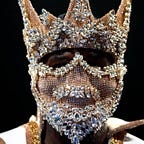Your face is a thumbprint, quite literally!
Facial Detection amuses us all. Once it was released in phones, it became widely popular. Everyone went ahead and activated the special feature on their phones. Soon phones were being appreciated on their availability of facial recognition. Various companies have named this feature in their own terms such as Face ID, but primarily they all serve the same purpose. The software mainly captures, analyzes and then reorganizes the information into patterns to match with the person’s features. The whole process takes place in 3 steps; Firstly, the face detection to capture information about the person. Then the face capture process transforms analog information into a set of digital information based on the person’s facial features. Finally the software matches it with the pre existing faces to match it.
“As technology expands there are always two sides to a story. People doubt the credibility of the software.”
The consequences of misuse is always costly so its checked by many critics before approval. This sector regarding the use of Facial Recognition has always been divided. The intrusion point of view of facial recognition has always been questioned. Just as it is further developed each year, we are continuously faced with the question of whether it’s appropriate, legal or productive for enforcement.
Questions of privacy rights will undoubtedly arise thanks to the character of face recognition . In order to finish a face recognition scan there must first be a captured image to undertake to match, also as a database or video to look for a match within.
“As we enter unchartered technological waters, the alternatives we make will create a precedent for future advancements.”
Future privacy and legal decisions about the ways during which city governments and law enforcement departments may seek the utilization of newly developed technological advances are going to be based on the policies and laws that are created to limit or outline proper practices for law enforcement’s use of face recognition software.
TED is a recognition software we have designed keeping the future in mind, The potential uses of this facial recognition software’s use by police officers and other regulated government agencies range greatly. The technology could be used just like a fingerprint scan, where existing image or video captured of someone committing a crime is used to scan through a facial database containing pre existing image files to identify if someone who has previously committed a crime is involved in the current case that they are pursuing. Another true advantage of this software is that it can also be used as a tool of surveillance, to verify a suspect’s whereabouts and movement through the use of public and business cameras.
It could even be used to find an individual by going through tape or that same video of someone committing a crime by applying to local public cameras and video feeds.
“ One might think that this is too good to be true“
The cases analyzed in this project have helped us gauge the real-life success of the Software. In Utah, Salt Lake City started using face recognition software in 2008. Before this, people would regularly duplicate their government issued identification card under a false name or birth date. the priority at the time was that this meant that folks were ready to apply for credit and financing under false credentials and underage minors were able to participate in age-restricted activities. Using face recognition software, the officers wanted to scan the database when a person applies for a license, by doing this they could cross-check if any previous existing member was applying again.
“In Utah, Salt Lake City started using face recognition software in 2008.”
This helped verify that there are no other licenses given to the same person. to verify this, the software would wish a photo of the individual applying for the ID and have access to the state’s database of licenses to scan their images and check if the applicant matches with nay of data. If there aren’t any matches in the data, then the application goes through as was common and therefore the person receives their license following the standard course of action. If there’s a match found within the system, however, the appliance would be rejected thereby preventing citizens from applying for a second license under false credentials.
All in all it’s encouragement is clearly shown for software’s such as this. Every government is willing to take this up as they see the advantages definitely. With caution and certain limits, the software seems perfectly executable in real life as shown by example in the state of Utah.
